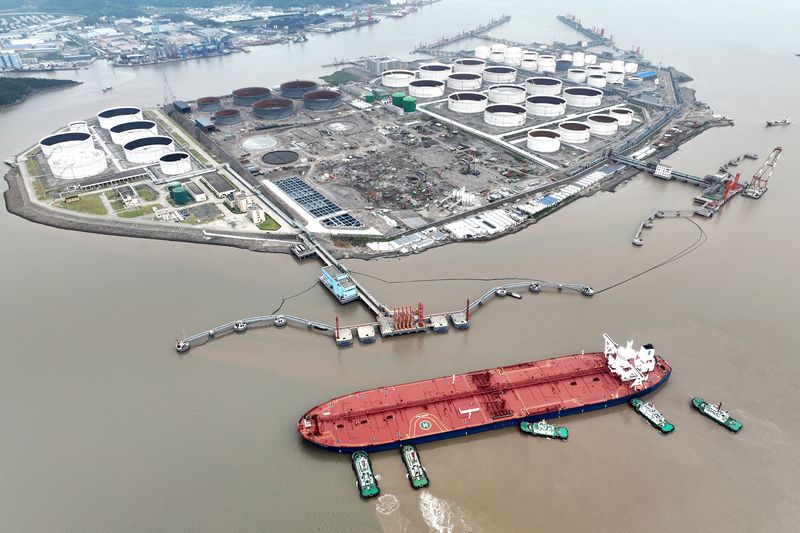
SINGAPORE (Reuters) – Oil prices were little changed in Asian trade on Friday but were on track for a fourth straight week of gains and holding near their highest levels since late April on hopes of strong summer fuel demand and some supply concerns.
Brent crude futures, which have risen 7% over the last four weeks, slipped 2 cents to $87.41 a barrel by 0143 GMT.
U.S. West Texas Intermediate (WTI) crude futures, which have climbed 9% over the past four weeks, inched up to $83.97, up 9 cents from Wednesday’s close. With the U.S. market shut for the Fourth of July holiday on Thursday, trading was thinned and there was no settlement for WTI.
Oil rose this week on strong summer demand expectations in the United States, the world’s largest oil consumer.
“Market sentiment has been supported this week by strong mobility indicators and intensifying geopolitical tension in the Middle East,” analysts at ANZ Research said in a note on Friday.
The U.S. Energy Information Administration (EIA) reported a massive 12.2 million barrels draw in inventories last week, compared with analysts’ expectations for a draw of 700,000 barrels. [EIA/S]
U.S. data on Wednesday showed that first-time applications for U.S. unemployment benefits increased last week while jobless numbers also rose, which analysts said could potentially hasten interest rate cuts by the U.S. Federal Reserves and support oil markets.
On the supply side, Reuters reported on Thursday that Russia’s oil producers Rosneft and Lukoil will sharply cut oil exports from the Black Sea port of Novorossiisk in July.

Meanwhile, Saudi Arabia’s Saudi Aramco (TADAWUL:2222) cut the price for the flagship Arab Light crude it will sell to Asia in August to $1.80 a barrel above the Oman/Dubai average, underscoring pressure faced by OPEC producers as non-OPEC supply grows.
Traders were also tracking the war in Gaza and elections in France and the United Kingdom, analysts said.
This post is originally published on INVESTING.



